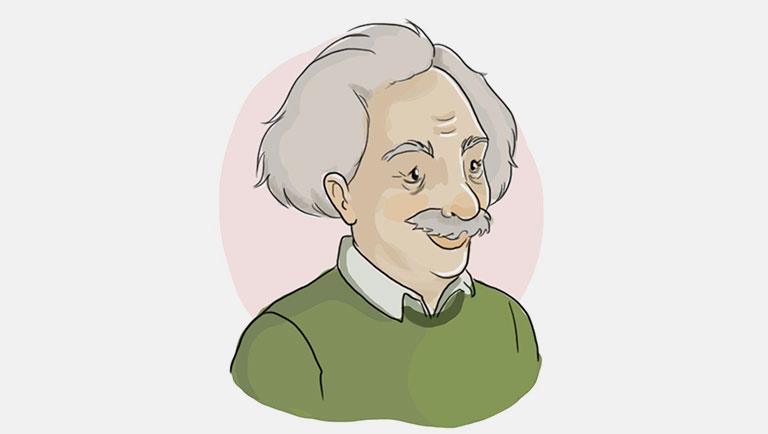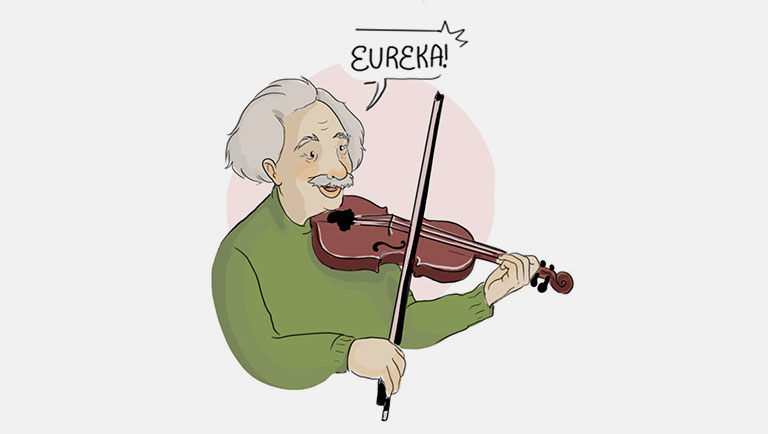When we talk about past events and we mention an action that was in progress in the past we use the past continuous tense, also known as the past progressive tense.
This structure is formed by:
I
He + was + verb ending in -ing
She
It
You
We + were + verb ending in -ing + complement
They

Look at some examples of past continuous tense related to Albert Einstein, one of the greatest physicists of all time:
| Affirmative | Negative | Interrogative |
|---|---|---|
| Einstein was trying several times to prove the theory of relativity until a solar eclipse helped him to reach his goal. | Einstein wasn’t wasting his time while he was working at a Swiss Patent Office. | Was Einstein working as
a
professor before World War I? Yes, he was. No, he wasn’t. |
| Einstein and his friends were spending a lot of time talking about science. | Scientists weren’t thinking to change the world or to be famous. | Were scientists thinking
about changing the world while they were making their experiments? Yes, they were. No, they weren’t. |
ING Spelling Rules
| General rule | Verbs ending in consonant + e |
|---|---|
| We add -ing to most verbs | We drop the -e- and add -ing. |
| do doing | write writing |
| work working | receive receiving |
| read reading | lose losing |
| Verbs ending in consonant + vowel + consonant | Verbs ending in -ie |
|---|---|
| We double the last consonant. | We drop -ie and add -ying. |
| hit hitting | lie lying |
| win winning | die dying |
| run running | tie tying |
-w and -x are not doubled.
Example:
fix - fixing
row - rowing
plow - plowing
| Verbs ending in: consonant + y or vowel + y | Last syllable is stressed |
|---|---|
| We just add -ing. | When the final syllable of the verb is stressed, we double the last letter. |
| study studying | regret regretting |
| try trying | admit admitting |
| play playing | begin beginning |
When we talk about two events that happened in the past it is common to use these two connectors:
when / while
When
“When” is used when an action in progress is interrupted by another one. So, this connector goes before an action in the simple past.
Example:
Einstein was working as a professor at Zurich University when he announced the theory of relativity.
While
“While” is used when two actions were happening at the same time in the past, so we use the past continuous.
Example:
Einstein was working at the Swiss Patent Office while he was developing scientific experiments and studies that revolutionized physics laws.
It is possible to invert an idea and start it with: when or while, but you have to use a comma after the first clause:
When Einstein announced the theory of relativity, he was working as a professor at Zurich University.
While Einstein was developing scientific experiments and studies that revolutionized physics laws, he was working at the Swiss Patent Office.
Read the following text and complete the spaces with the correct form of the verb: simple past or past continuous.



